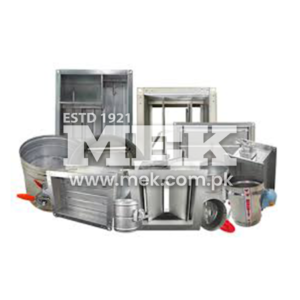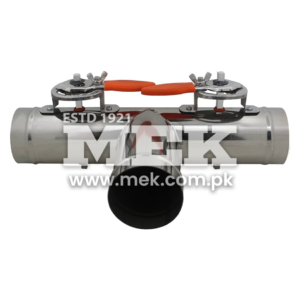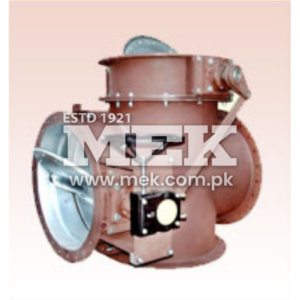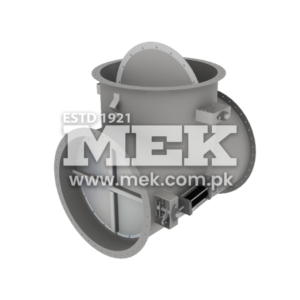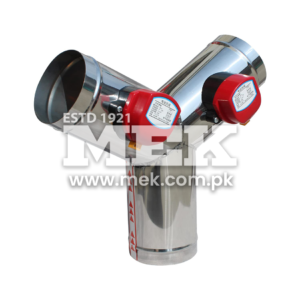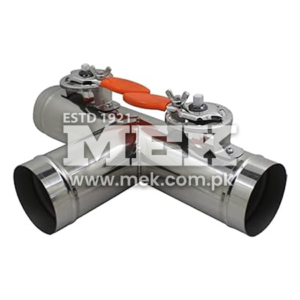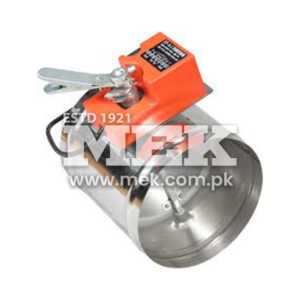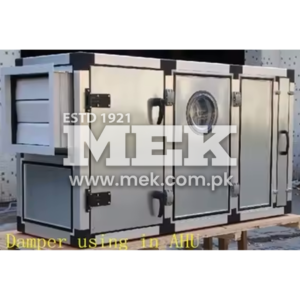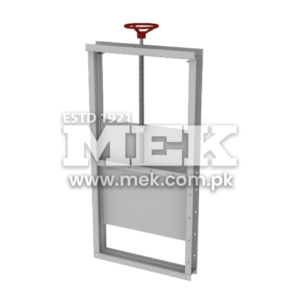Product Details
A face and bypass damper is a set of two linked dampers used in heating, ventilation, and air conditioning (HVAC) systems. They work together to control the temperature of the air being supplied to a building.
Description
Face and Bypass Damper:
● Face damper: This damper is located on the inlet side of the air handling unit (AHU) and controls the amount of outside air (OA) that enters the unit.
● Bypass damper: This damper is located on the outlet side of the AHU, typically just downstream of a heating or cooling coil. It controls the amount of air that bypasses the coil and mixes with the conditioned air.
By working together, the face and bypass dampers can regulate the temperature of the supply air. In heating mode, the face damper will be open to allow more OA into the unit, while the bypass damper will be closed to force all of the air through the heating coil. In cooling mode, the face damper may be closed to reduce the amount of OA entering the unit, and the bypass damper will be open to allow some of the air to bypass the cooling coil.
Benefits to using face and bypass dampers:
1. Improved temperature control: By precisely controlling the amount of air that is mixed with the conditioned air, face and bypass dampers can help to ensure that the supply air temperature is exactly what is needed to maintain comfort in the conditioned space.
2. Energy efficiency: In heating mode, using the bypass damper to reduce the amount of air that is heated can save energy. In cooling mode, using the face damper to reduce the amount of OA that is cooled can also save energy.
Delving Deeper into Face and Bypass Dampers in HVAC Systems
Face and bypass dampers are a dynamic duo in the world of HVAC, offering precise control over conditioned air temperature. Let’s explore their intricacies:
Construction and Linkage:
● These aren’t individual dampers, but rather a single unit with two interconnected blades.
● They come in various configurations:
○ Face/Bypass (FB): One damper above the other, where one opens as the other closes.
○ Face/Horizontal Bypass (FBH): Dampers positioned side-by-side, with one opening horizontally and the other vertically.
○ Face/Right-Angle Bypass (FBR): Dampers arranged at a right angle, operating similarly to FBH.
Operational Nuances of face and Bypass damper:
● Temperature Control Strategy: The key lies in mixing conditioned and unconditioned air.
○ Heating: The face damper opens to allow more OA, while the bypass damper closes, forcing all air through the heating coil for maximum warmth.
○ Cooling: The face damper might close to limit cool OA intake. Conversely, the bypass damper opens, allowing some air to bypass the cooling coil and mix with the chilled air, preventing over-cooling.
○ Mixing Point: The ideal spot for a temperature sensor is after the air mixes, often downstream of the supply fan, which promotes good mixing. In space-constrained situations, averaging sensors can be used, but their placement is critical for accurate temperature readings.
Additional Considerations Of face and bypass Damper:
● Fail-Safe Mechanisms: It’s crucial to ensure proper fail-safe behavior:
○ Freeze Protection: In winter, face dampers typically fail-open to prevent the cooling coil from freezing if the system loses power.
○ Preheat Control: During winter shutdown, preheat control on both face and bypass dampers might be activated to maintain a minimum temperature.
Benefits and Applications Of face and bypass Dampers:
● Precise Temperature Control: By meticulously mixing airflows, face and bypass dampers ensure the conditioned air precisely meets the desired temperature for optimal comfort.
● Energy Efficiency: Strategic use of these dampers translates to energy savings:
○ Heating: Reduced heating by bypassing some air in milder conditions.
○ Cooling: Lower cooling load by limiting cool OA intake and mixing with warmer air.
● Applications: They’re commonly found in air handling units (AHUs) of commercial and industrial buildings to maintain consistent temperature and air quality.
Remember:
● For optimal performance, proper installation and calibration of face and bypass dampers are essential.
● Consulting an HVAC professional for specific system recommendations is always advisable.



